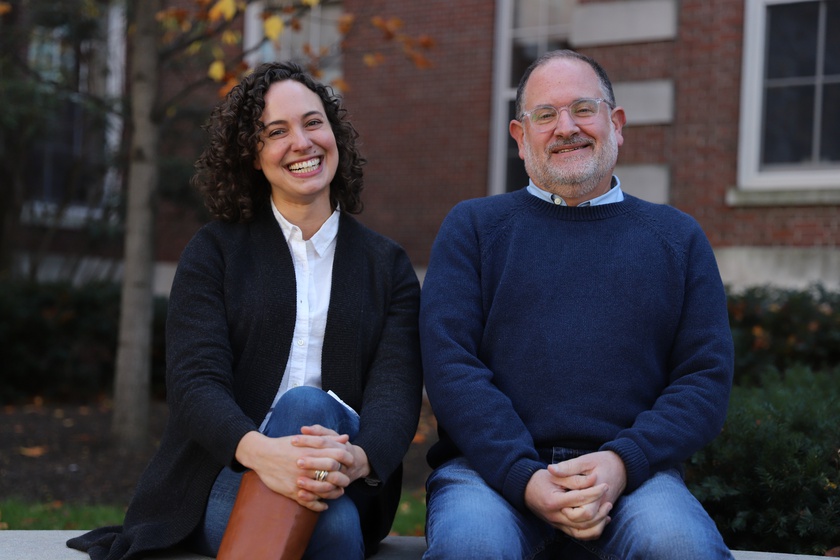“We should apologize because I think this interview will be quite boring as we’re a little boring,” says Lauren Kaminsky, laughing brightly. Without missing a beat, Steven Biel chuckles and sinks deep into his armchair: “Of course, when two historians teach together, there is no discourse.”
Yet over the course of our conversation, their story — how they individually pursued their passion for history and literature and, eventually, came to work together as colleagues and close friends — is anything but boring.
Kaminsky is the current director of studies for the Committee on Degrees in History and Literature and a lecturer on Hist and Lit. Biel is the executive director of the Humanities Center at Harvard and a senior lecturer on Hist and Lit.
In true academic fashion, the two first met during a job interview; Biel, who was the director of studies for Hist and Lit at the time, interviewed Kaminsky for the position in 2014. History and Literature is Harvard’s oldest concentration, and after teaching at New York University, Kaminsky was excited by the possibility of working in a department unique to Harvard.
“There’s nothing else like it in the world,” Kaminsky says. “It’s a program of study that prioritizes student interests and gives students the kind of training they need to design their own research projects and pursue them as a senior thesis.”
History and Literature brings together scholars from diverse fields to engage in intellectual discourse — exemplified perfectly by Kaminsky’s and Biel’s co-taught seminars. In the past, Kaminsky and Biel have co-taught “World War One in Fiction, Film, Poetry, and Memoir.” This fall, their seminar is HIST-LIT 90DV: “Red Scares”.
Kaminsky is a Russian historian by training, and Biel is an American historian. In building the “Red Scares” syllabus, they were able to approach the conflict from both sides of the Atlantic. “[Biel] was suggesting a lot of these really incredible documents and films and memoirs, and so on, about the fear of communists,” Kaminsky says. “I was bringing the actual communists.”
Biel explains that the pair offered the course this semester as a way to renew his “interest in things that I thought I might know.” Teaching the course with Kaminsky provides him the opportunity to develop a more nuanced view of Red Scares throughout history by focusing on the Russian perspective.
Beyond differences in their research interests, the two have a complementary teaching dynamic. Kaminsky describes Biel as the “rock.” He sits at one end of the table, anchoring the discussion, while she paces around the room, energized by it.
“A lot of running a seminar is improvisational… But every time it really is a lesson in just how much intimacy and trust it takes to complete a seminar together,” Kaminsky says.
The two work particularly well with each other because they can recognize and appreciate the unique talents the other brings. Kaminsky calls Biel an “unbelievably good writer, and an even better editor.” Biel describes Kaminsky as “incredibly wise about not only the subject matter, but about what makes a class and a program work well.”
When asked to share future seminar ideas, Kaminsky asks, “Who knows how long will we be teaching Red Scares, Steven?”
“I would like to continue to teach it together next fall,” admits Biel.
Kaminsky leaps up and exclaims, “Yes! It’s on the record and in The Crimson.”


